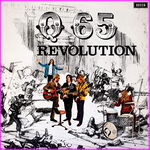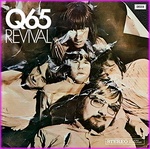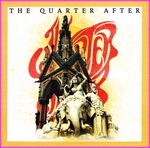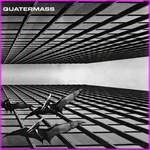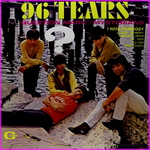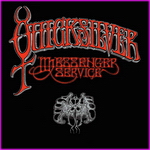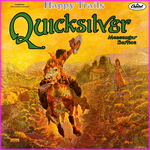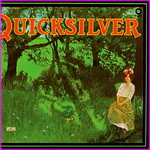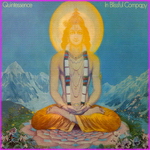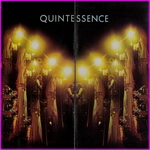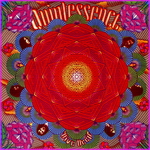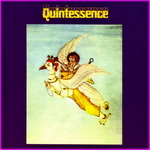|
|||||||||||||||||||||||||||||
Please feel free to submit a review |
|||||||||||||||||||||||||||||
Q65 - Revolution1966 Decca – QL 625 363 Track List: The Life I Live, I Got Nightmares, Just Who's In Sight, Mr. Pitiful, I'm A Man, Middle-Age Talk, Summer Thoughts In A Field Of Weed, Down At The Bottom, Get Out Of My Life, Woman, Spoonful,Sour Wine, Bring It On Home.
Q65 - Revival1969 Decca – XBY 846 515 Track List: Cry In The Night, No Place To Go, It Came To Me, I Was Young, World Of Birds, So High I've Been, So Down I Must Fall, Sundance, Voluntary Peacemaker, Ridin' On A Slow Train, Fairy Tales Of Truth. |
|||||||||||||||||||||||||||||
The Quarter After - The Quarter After2004 Bird Song Recordings – BSCD 101 Track List: So Far To Fall, Your Side Is Mine, Always Returning, A Parting, Too Much To Think About, Know Me When I'm Gone, Mirror To You, One Trip Later, Taken, Everything Again. |
|||||||||||||||||||||||||||||
Quatermass - Quatermass1970 Harvest – SHVL 775 Track List: Entropy, Black Sheep Of The Family, Post War Saturday Echo, Good Lord Knows, Up On The Ground, Gemini, Make Up Your Mind, Laughin' Tackle, Entropy (Reprise). |
|||||||||||||||||||||||||||||
? (Question Mark) & The Mysterians - 96 Tears1966 Cameo – SC-2004 Track List: I Need Somebody, Stormy Monday, You’re Telling Me Lies, Ten O’Clock, Set aside, Upside, Don’t Tease Me, Don’t Break This Heart Of Mine, why Me, Midnight Hour, 96 Tears. |
|||||||||||||||||||||||||||||
Quicksilver Messenger Service - Same1968 Capitol 2904 Track List: Pride Of Man, Light Your Windows, Dino’s Song, Gold and Silver, It’s Been Too Long, The Fool. Review: This album gets off to a fairly upromising start with 'Pride Of Man' a fierce protest-style song with growled and strained vocals from David Freiberg and a feeble-sounding brass section punctuating proceedings. There's some nice 12-string on 'Light Your Windows' and a pleasant floaty feel. You can just detect the beginnings of Cipollina's long, meandering, Spanish-flavoured lines on this one. It has a nice swinging, jazzy feel and the song fades out just when you're beginning to get into the flow of it. 'Dino's Song' written by Dino Valente is a curious poppy thing that would have probably gone down well if covered by, say, the Monkees, but is well beneath Quicksilver's talents. But excusable for 1967, I would say. Recording started in the final month of that year even though the album was not released until '68. 'Gold And Silver' is an instrumental which carries on the swinging feel of 'Light Your Windows' and shows off the twin lead guitar prowess of Duncan and Cipollina, as well as some tasteful bass from Freiberg. This is the first track which really lifts off into the higher reaches of psychedelia. 'It's Been Too Long' returns to the dated, British Invasion style which tends to date the album rather badly, though there is a tasty little break from Cipollina which is made to pan nicely across the stereo image, courtesy presumably, of Nick Gravenites and Harvey Brooks, the joint producers. Then it's hang onto your hats time with 'The Fool', in which there are long instrumental jams featuring both guitarists at their acidic best and some tasteful viola playing from Freiberg who also contributes There's a story about John Cipollina approaching British band Man, asking if he could join them for a few gigs. They, in their modesty, didn't believe the great Cipollina could be asking to join little old them, so asked him to prove his identity by playing the wahwah part just before the vocals kick in. They figured that only Cipollina would be able to get this right. He got the gig. This is not quite up to the classic quality of Happy Trails, but if you liked that album and want more, this should be your first stop. Next, move onto one of the live sets that has Smokestack Lightning on it. Reviewed by Doctor Dark - 20th September 2002Review 2: Quicksilver Messenger's first album is an absolute gem which is usually underrated by critics and most The band's second album, Happy Trails, is generally hailed as their finest moment, but for me this LP The highlight, though, has to be 'Gold and Silver', which contains some of the best guitar interplay I've ever heard. John Cipollina was indeed one of the great guitarists and Freiberg was no slouch on the bass. Long live Quicksilver Messenger Service! Reviewed by Harfy Magnum - December 2002 |
|||||||||||||||||||||||||||||
Quicksilver Messenger Service - Happy Trails1969 Capitol 120 Track List: Wdo Do you Love Suite-Who Do You Love (part 1), When Do You Love, Where You Love, How You Love, Which Do You Love, Who Do You Love (part2 ), Mona, Maiden Of The Cancer Moon, Calvary, Happy Trails. Review: March 1969 saw he release of the second album by one of the Bay Area’s favourite bands, Quicksilver Messenger Service. While never as successful as some of their peers, such as Jefferson Airplane or the Grateful Dead, with it’s release Happy Trails managed to capture the essence of the time. Side One begins with their adaptation of Bo Diddley’s Who Do You Love, around which they build up a side long suite pieced together from various live recordings at the East and West Fillmore’s. It gives and authentic feel of the band at it’s most powerful, highlighting the band’s twin lead guitar sound. From the opening guitars the song moves through the first vocal section into Gary Duncan’s solo ‘When Do You Love’. My favourite guitar solo of all time, it weaves through light and shade to a rocking finale, winding down into the trippy ‘Where Do You Love’. Drummer Greg Ellmore keeps the beat with help from the Fillmore audience and ghostly guitars drift in and out while the band do call and response grunts with their fans. As the crowd becomes more animated the grunts become shouts and screams and back comes the guitars. John Cippolina makes his statement with ‘How You Love’, an in your face, metallic solo featuring his trademark vibrato guitar sound which buzzes from speaker to speaker. Again this slows down and segues into David Freibergs ‘Which Do You Love’, an interactive bass solo which leads neatly back into ‘Who Do you Love’ again and the song’s musical finale, rounded off with a very polite “Thankyou and Goodbye” to the crowd. Moving to Side Two we find another Bo Diddley song, ‘Mona’, a mid tempo rock song and both guitarists acquit themselves well with inventive soloing and fills while the rhythm section power the song along, especially strong are Ellmore’s almost tribal drums. ‘Maiden Of The Cancer Moon’ is a short instrumental which follows almost as a continuation of ‘Mona’, this then flows gently into Duncan’s ‘Cavalry’, a psychedelic journey with layer upon layer of Spanish guitar building to a dense crescendo, until the feedback takes over drifting you back to the soft guitars and journey’s end. Happy Trails is without doubt, one of the seminal releases of the late sixties and remains one of it’s finest moments. Having been together since 1964 then band have an almost telepathic interplay which gives the album a very together, band feel rather than four musicians playing the same song. While the guitarists obviously feature heavily, the rhythm section are well up in the mix creating a strong base and shape to the music, allowing Duncan Cippolina freedom to explore their ideas. As complete an album as you will find from the period. Highly recommended. Reviewed by Nicholas - January 2002 |
|||||||||||||||||||||||||||||
Quicksilver Messenger Service - Shady Grove1969 Capitol (est 391) Track List: Shady grove, Flute song, Three or feet from home, Too far, Holy Moly, Joseph's coat, Flashing lonesome, Words can't say, Edward-the mad shirt grinder. |
|||||||||||||||||||||||||||||
Quintessence - In Blissful Company1969 Island (ilps 9110) Track List: Giants, Manco capac, Body, Ganga mai, Chant, Pearl and bird, Notting Hill Gate, Midnight mode. Review: An overlooked mini-milestone in esoteric rock funk raga. The tribal 60s aspiring to a cosmic state of bliss as a medicine for the sickness of the world. Innocent yet innovative. This album had a big effect on other musical groups such as King Crimson, Hawkwind, Osibisa, Graham Bond and George Harrison. Although the production was poor quality due to heavy-handed overuse of the "new" Dolby filters, the weaving of electric flute with rocking guitars brought this group into a new genre, the direction was inward with celebration and power. The words (printed in the sumptuous album cover) of Manco Capac, Pearl and Bird are true poems, but, "Body" depicting the genesis of man in such symbolic purity, has to be one of the best cosmic pieces of lyric-writing of the 60s decade. Whatever happened to Siva who sang so joyfully, or Bhava who crafted such perfectly spiritual lyrics? Are they forever part of our collective quintessence? Perhaps groups like this just beam-down and embody a new direction long enough to change us just a little bit...then they are gone...alas. Reviewed by DJones (The Inside Front Cover) - March 2002 |
|||||||||||||||||||||||||||||
Quintessence - Quintessence1970 Island (ilps 9128) Track List: Jai jai jai jai rama hi jai, Rama bhagata hanuman, Jai Shiva Shankar-Kailash Pati, Jai jai Gauri ma parvati, Raghu Pati Raghaw Raja Jam, Patita pa wan Sita Ram, Sri Krishna Godvinde Hare Murare, He nath Narian Vasudeva, Om Buddha om mane ne padme hum, Om Brahma Vishnu Sadasiva, Sarada Devi Ki jai Ho om namo, Bhagvate Ramakrishnaya. |
|||||||||||||||||||||||||||||
Quintessence - Dive Deep1971 Island (ilps 9143) Track List: Dive deep, Dance for the one, Brahman, The seer, Epitaph for tomorrow, Sri rarn chant. |
|||||||||||||||||||||||||||||
Quintessence - Self1971 RCA SF 8273 Track List: Cosmic Surfer, Wonders Of The Universe, Vishnu Narain, Hallelujah, Celestial Procession, Self, Freedom, Water Goddess. Review: A half studio, half live album release from one of the most individual underground bands of the late sixties. It then moves to a chant of Vishnu Narain before a musical workout with electric guitar soloing over powerful drumming. Hallelujah continues in a similar vein with a slow start complete with Quintessence style lyrics but gets to the Hallelujah chant and gradually speeds up, propelled by the strong rhythm section. Celestial Procession is a short musical piece composed for flute, birds, running water and sheep. The title track ends the side. Accordions accompany what sounds like a church choir reciting words, one of which incomprehensible, rather sums it up. Side Two features just two tracks recorded live at Exeter University in December 1971. Opening with Freedom it breezes through the vocals and into the guitar solos, again with an impressive percussion backing. It then slows to a keyboard passage then into gentle guitar picking which has taken you into Water Goddess without you even noticing. Speeding up again with vocal chanting and a lengthy guitar workout we get another flute solo, which heightens the flowing mood of the song. The audience join in with the band, clapping and answering the chants from the stage until the fade out. However when they do hit the groove its is an uplifting experience and gives you some idea of how exciting their liver performances must have been. Reviewed by Nicholas - February 2002 |
|||||||||||||||||||||||||||||

